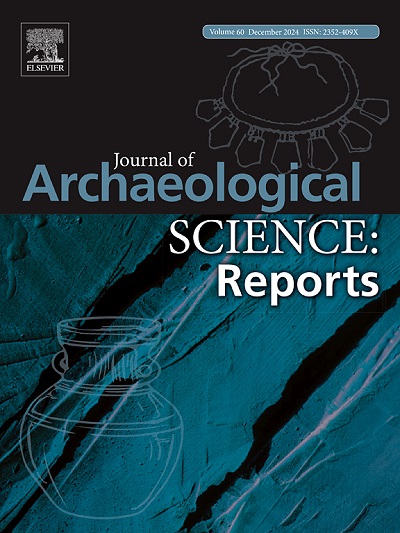发现前西班牙人基多-厄瓜多尔的饮食习惯:在不同的年代时期(距今3500 - 750大卡)食用古代淀粉类食物
IF 1.5
2区 历史学
0 ARCHAEOLOGY
引用次数: 0
摘要
食物作为日常生活的核心组成部分,是所有社会认同和发展的一个关键方面。了解古代的烹饪方法非常有价值,原因有很多,包括分析早期人口的健康状况,以及可能有助于解决粮食不安全问题的祖先策略的潜在恢复。在厄瓜多尔,除了对一些地区的早期生存活动进行了相对有力的研究外,古植物学方法的应用还很有限。本研究旨在通过鉴定从三个遗址中发掘出的附着在陶器和石器上的古淀粉,帮助改变基多的这种状况,这三个遗址代表了大约 2750 年时期(公元前 3500-750 年)中三个不同的时间点。该研究采用了一种回收淀粉颗粒的方法,随后使用光学显微镜对这些颗粒进行了鉴定。主要发现包括鉴定了马铃薯、木薯、玉米、豆类/豆类、桃掌、乌鲁古、马树花、奥卡、阿奇拉、山药、红薯、箭杆草和辣椒中的淀粉颗粒。此外,还确定了用于制作这些食品的各种食品加工方法。就非同步模式而言,这项研究显示,在整个确定的时期内,马铃薯、木薯、玉米和红薯中的淀粉含量显著增加。与稳定同位素数据的比较表明,虽然这些植物在饮食中所占的比例可能会随着时间的推移而变化,但这些物种构成了漫长的烹饪传统的核心部分,而这一传统在很大程度上已经失传。本文章由计算机程序翻译,如有差异,请以英文原文为准。
Discovering the dietary practices of pre-Hispanic Quito-Ecuador: Consumption of ancient starchy foods during distinct chronological periods (3500 – 750 cal BP)
Food, as a central component of everyday life, is a key aspect of identity and development for all societies. Understanding ancient culinary practices is valuable for myriad reasons, including analyses of health in earlier populations and the potential recovery of ancestral strategies that might help combat food insecurity. In Ecuador, beyond a relatively robust body of research on early subsistence activities for some regions, there has been limited application of paleobotanical methods. This study aims to help change this situation for Quito through the identification of ancient starch adhered to ceramic vessels and stone tools recovered from three sites representing three distinct moments in time during a roughly 2,750-year period (3500 – 750 cal BP). A protocol was carried out to recover starch granules, which were later identified using optical microscopy. The main findings included the identification of starch granules from potato, manioc, maize, legumes/beans, peach palm, ullucu, mashua, oca, achira, yam, sweet potato, arrowroot, and chili pepper. Additionally, various food processing methods used for the preparation of these foods were identified. In terms of diachronic patterns, this research revealed significant ubiquity of starch from potato, manioc, maize, and sweet potato throughout the defined period. A comparison with stable isotope data suggests that while the percentage of the diet represented by each of these plants likely varied over time, these species formed part of the nucleus of a lengthy culinary tradition that largely has been lost.
求助全文
通过发布文献求助,成功后即可免费获取论文全文。
去求助
来源期刊

Journal of Archaeological Science-Reports
ARCHAEOLOGY-
CiteScore
3.10
自引率
12.50%
发文量
405
期刊介绍:
Journal of Archaeological Science: Reports is aimed at archaeologists and scientists engaged with the application of scientific techniques and methodologies to all areas of archaeology. The journal focuses on the results of the application of scientific methods to archaeological problems and debates. It will provide a forum for reviews and scientific debate of issues in scientific archaeology and their impact in the wider subject. Journal of Archaeological Science: Reports will publish papers of excellent archaeological science, with regional or wider interest. This will include case studies, reviews and short papers where an established scientific technique sheds light on archaeological questions and debates.
 求助内容:
求助内容: 应助结果提醒方式:
应助结果提醒方式:


